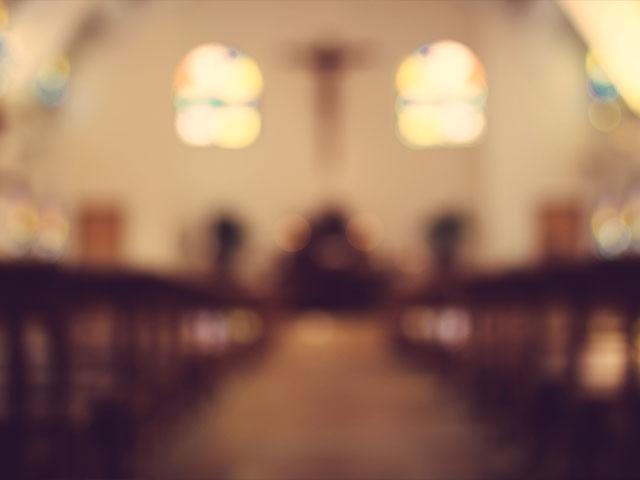
Coptic Orthodox Diocese of PENNSYLVANIA and Affiliated Regions
H.H. Pope Tawadros II
H.G. Bishop Karas
Donate to the Diocese’ Charitable arm HERE.
Orthodoxy
"The Coptic Orthodox Church is one of the most ancient Churches in the world, founded in the first century in Egypt by Saint Mark the Apostle and writer of the second Gospel of the New Testament. A conservative Church, it has carefully preserved the Orthodox Christian faith in its earliest form, handing it down through generations, remaining true to the Apostolic doctrines and patterns of worship. The Church’s spiritual approach emphasizes holiness, Divine Mysteries and fellowship, rooted firmly in the canons of the Holy Scriptures, the apostolic and Orthodox creeds, the teachings of the Church Fathers and the first three ecumenical councils." Learn more by clicking here
. . . . . . . . .
Tour a Coptic Orthodox church to learn about Orthodox liturgies in this four part series from YouTube channel The Ten Minute Bible Hour.
Liturgy Map
If you’re new to Liturgical worship, the map below provides a walkthrough of the Coptic Liturgy and what to expect. Map is provided by stsa.church
Our Patron Saints
St Monica
Monica was born around the year 322 in North Africa, in present day Algeria, to Christian parents who raised Monica as a devout Christian. She was married to Patricius, an older pagan man who had a violent temper and was prone to adultery. Through her prayers and gentle and understanding demeanor Monica was able to bring her husband and mother-in-law to Christ before their deaths.
Monica and her husband had three children: Augustine, Navigius and Perpetua, who were not baptized due to her husband’s objections. While Augustine showed early talents as a scholar and teacher, at the same time he lived a life of sin and lived with a mistress. He fell under the influence of the heretical Manichean sect. His mother was horrified and tried to turn him away from this cult. Augustine, however, remained with the sect for nine years. St. Monica felt disheartened and disappointed, but never gave up. She even tried to enlist the help of a bishop who had once been a Manichean himself, but he would not argue with Augustine. The bishop reassured her saying, “Go on your way, and God bless you, for it is not possible that the son of these tears should be lost.” After the death of her husband, Monica followed Augustine to Milan where in 386 her son finally converted and was baptized on the eve of Pascha, to her great joy.
✠ May the endless tears and efforts of this great saint be a comfort to us all.
St Augustine of Hippo
Augustine of Hippo was born in 354, in the town of Thagaste, North Africa (present day Algeria), to pagan father, Patricius and Christian mother, Monica.
His mother's fervent faith was a strong influence on young Augustine, one that would follow him throughout his life. However Augustine wandered from the faith at a young age. He left the church to follow the Manichean religion, much to his mother's despair. At about the age of 19, Augustine began an affair with a young woman in Carthage. The woman remained his mistress for over 15 years and gave birth to his son Adeodatus.
Augustine was not strongly influenced by Christianity and its ideologies, but after coming in contact with Ambrose of Milan, Augustine re-evaluated himself and was forever changed. Augustine arrived in Milan and was immediately taken under the wing by Ambrose. Within his Confessions, Augustine states, "That man of God received me as a father would..." Eventually, Augustine says that he was spiritually led into the faith of Christianity.
In 386, at the age of 31, after having heard and been moved by reading the life of Saint Anthony of the desert, Augustine converted to Christianity. As Augustine later told it, his conversion was prompted by a childlike voice he heard telling him to "take up and read", which he took as a divine command to open the Bible and read the first thing he saw. Augustine read from Paul's Epistle to the Romans – the "Transformation of Believers" section (chapters 12 to 15) – wherein Paul outlines how the Gospel transforms believers, and the believers' resulting behavior.
In 391, Augustine was ordained a priest in Hippo, where he became a famous preacher (more than 350 preserved sermons are believed to be authentic), and was noted for combating the Manichean religion, to which he had formerly adhered...
In 395, he was made Bishop of Hippo, and remained in that position until his death in 430. He wrote his autobiographical Confessions in 397–398.
Augustine worked tirelessly in trying to convince the people of Hippo to convert to Christianity. Though he had left his monastery, he continued to lead a monastic life until his death. He is also known as the 'Son of tears' because of the endless tears his mother shed until his conversion.
✠ May the blessings and prayers of this great saint be with us, Amen.
✠ Continue to intercede for us, beloved St. Monica & St. Augustine.
Source: Wisdom of the Fathers






